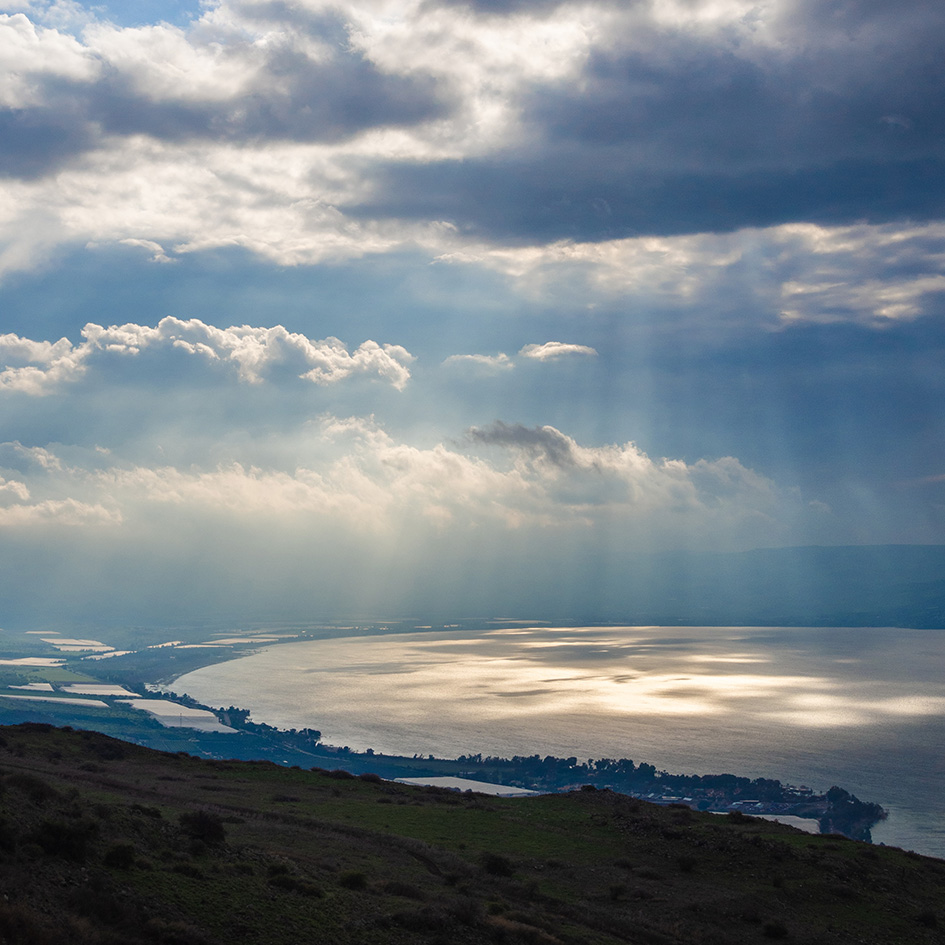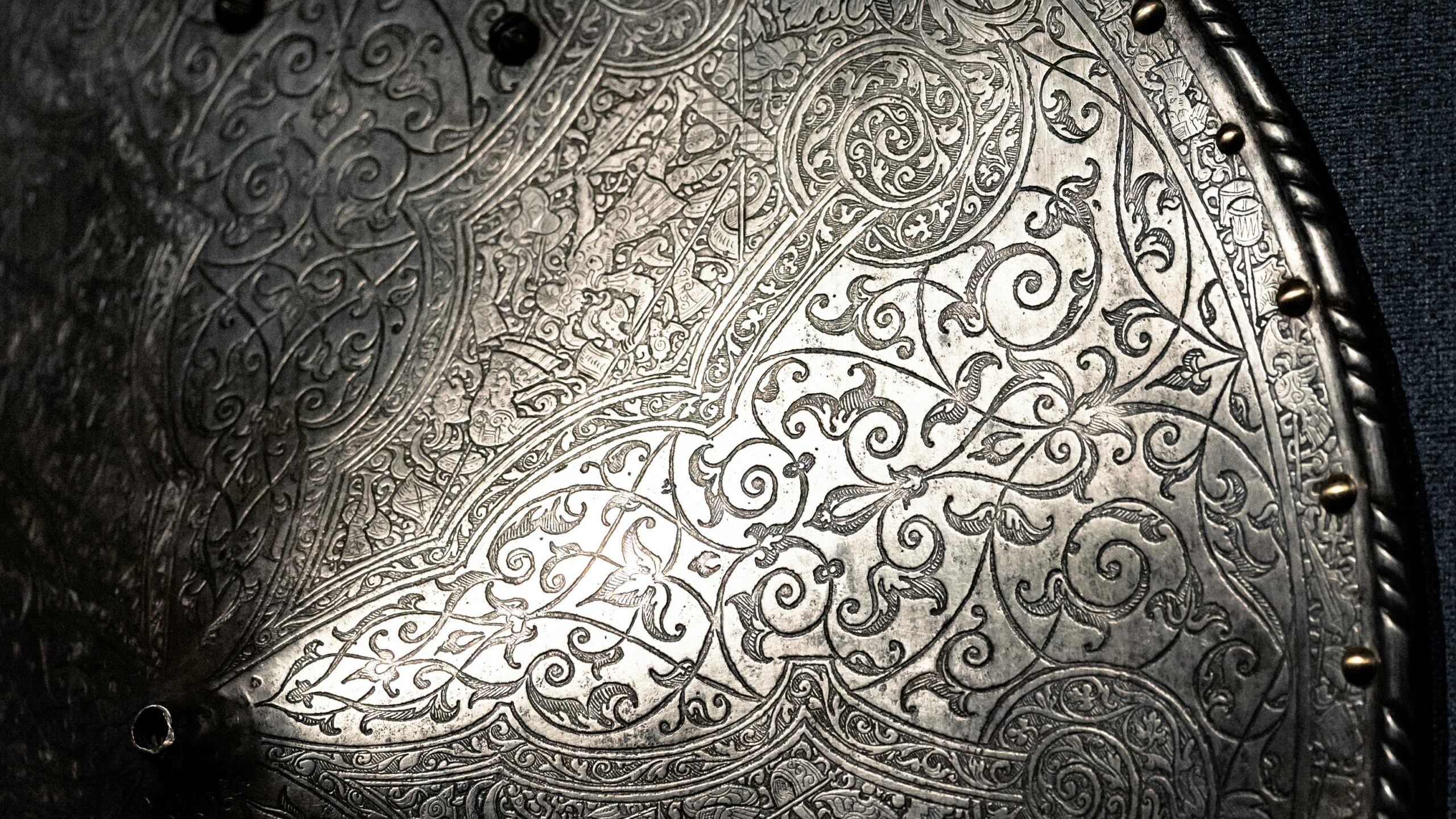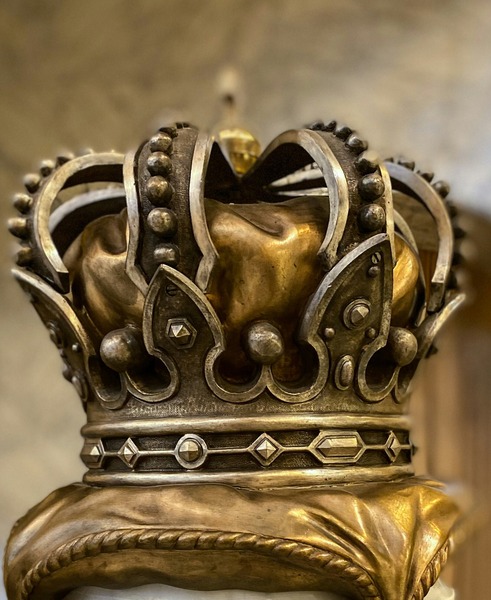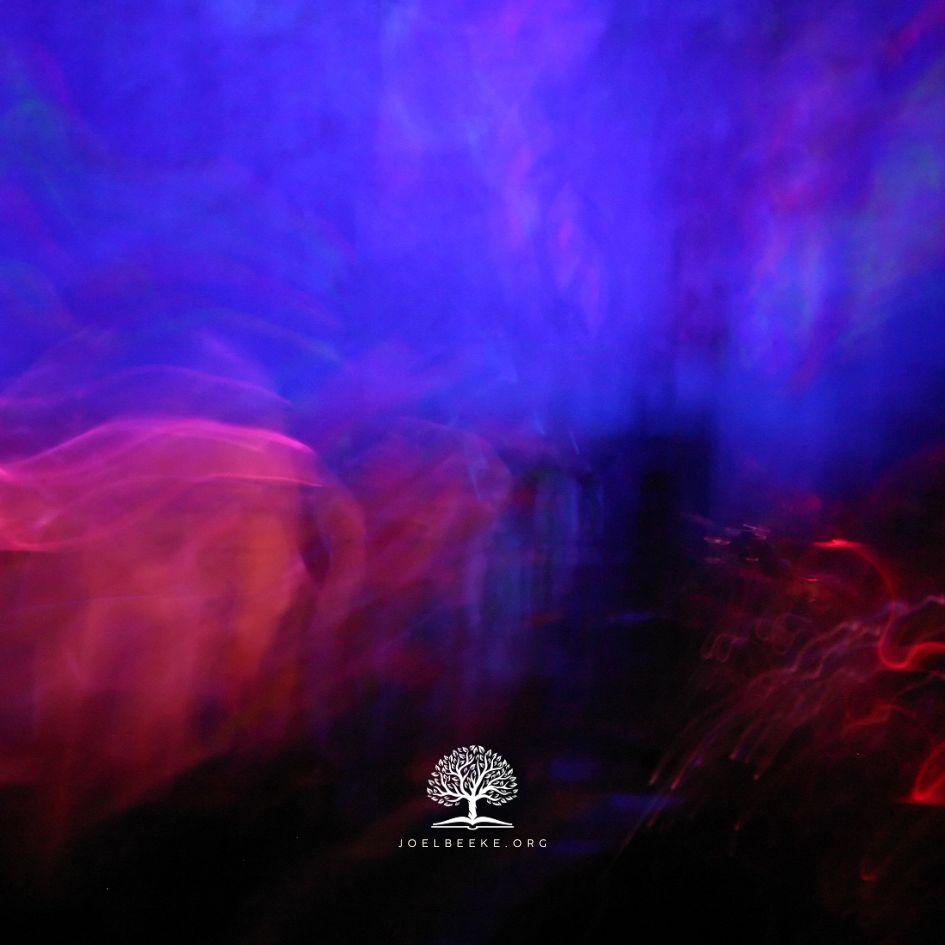
Teaching is hard work. When Jesus and His disciples got into a boat after a full day of teaching, the disciples were not surprised that Jesus fell asleep. The gently rocking waves of the Sea of Galilee might have lulled them to sleep, too. But on their way across the big lake, a terrible storm arose.
The southern end of the Sea of Galilee is a deep valley lined by cliffs. Wind can suddenly come roaring into that valley and whip the sea into a storm.
[The Reformation Study Bible, ed. R. C. Sproul (Orlando: Ligonier, 2005), 1422. Thanks to Paul Smalley for his assistance on this article, which is slightly enlarged from an address I gave for a regional conference of the Philadelphia Conference of Reformed Theology (PCRT) in Quakertown, Pennsylvania on November 12, 2010.]
Andrew, Peter, James, and John had seen many storms in their lifetime of fishing, but this one overwhelmed them. The wind howled and the waves crashed. The boat began taking on water. It rode lower in the water so that each wave threatened to fill it. Fear gripped the men. Their boat was sinking; would they all die?
They turned to Jesus, who was still sleeping, and shouted over the roaring sea, “Master, carest thou not that we perish?” Jesus stood up and rebuked the wind and the sea. In an instant, wind and sea were stilled. But the men were still terrified. “What manner of man is this, that even the wind and the sea obey him?” they asked (Mark 4:35–41; cf. Pss. 65:7; 89:9).
Why was Jesus asleep in the midst of the storm? Why didn’t the storm awaken Him? The obvious answer is, His humanity. He was tired. He was worn out after a long day’s work and needed rest to renew His strength.
How did Jesus calm the storm? Again, the answer is obvious: His deity. Jesus had such power over creation that His words instantly changed the weather. He did not use technology, magic charms, or rituals. Jesus didn’t even pray. He just said to the storm, “Be silent!” Christ has the power of God, and His disciples recognized it when they said, “Even the wind and the sea obey Him.”
But the mystery here is whether Jesus was tired or all-powerful. Was He drained of energy or full of energy? Was Christ limited so He needed restoration, or was He infinite in ruling over creation by His mere word? The answer, according to Scripture, is both. Jesus is both limited in His humanity and infinite in His deity as Lord over creation.
Jesus Christ the God-Man
John 1:14 says, “The Word was made flesh, and dwelt among us, (and we beheld his glory, the glory as of the only begotten of the Father,) full of grace and truth.” As is typical of him, John uses simple words to express a very deep truth. Incarnation is a Latin word that means “becoming flesh.” In the Incarnation, God became human flesh. Contrary to the theologian Rudolf Bultmann, this is not “the language of mythology”; instead, as Robert Reymond says, this testimony of John is the language of eye-witnesses reporting what they know to be true. They say, “We beheld his glory” (cf. also 1 John 1:1–3).[Robert L. Reymond, John, Beloved Disciple: A Survey of His Theology (Rossshire, U.K.: Christian Focus, 2001), 180–82.]
The reality of God made flesh in Jesus was experienced by the apostles and portrayed in the gospels. This reality is what compelled the church to affirm Jesus as both God and man. The Bible compelled the Council of Chalcedon (A.D. 451) to state that Christ is one Person with two distinct natures, human and divine. As the Westminster Confession (VIII.2) says, “Two whole, perfect, and distinct natures, the Godhead and the manhood, were inseparably joined together in one person, without conversion, composition, or confusion. Which person is very God and very man, yet one Christ, the only Mediator between God and man” (cf. Larger Cat., Q. 54).
In the process of grafting, a person cuts a living twig off a tree. He then cuts into another tree, sometimes of another species, and presses the twig into the tree. The two are sealed together with wax or wrapping. Over time, the twig and the tree grow together into one unity, one living organism. Both the twig and the tree retain their unique genetic codes and their own distinct natures. But now the twig draws its life and bears its fruit from the roots of the tree. [Ray R. Rothenbergarand and Christopher J. Starbuck, “Grafting,” accessed 9-4-10.]
In a similar but more profound way, God grafted human nature into His divine Son. The result was not a hybrid demigod like Hercules or some kind of Superman. Rather, both the divine nature and the human nature retained their individual, essential properties. But now man was joined to God in one living Person, Jesus Christ. In Him, believers draw life from the divine root and bear fruit for God’s glory. In botanical grafting, two plants of the same genus or of like nature are combined. The miracle of the Incarnation is that God grafted the finite into the infinite. Thus, the Infinite One became bone of our bone, flesh of our flesh. The Prince of glory became the Babe in a manger. The Son of God became the Son of Man. The Creator came out of the creature. He who made the world and was above the world came into the world. The Almighty One became a little Child. The immortal Son was clothed in rags of mortality. The Eternal One became a Child of time. God, who made man after His image, was Himself made in man’s image. He whose dwelling is in the heavens was let down into the hell of this earth. He who thunders in the heavens cried in the manger. The invisible God was made visible. God took our flesh and dwelt in it with His divine fullness so that our flesh could become more glorious than the angels — and through that flesh God opened up His gospel treasures by being Savior, Redeemer, Kinsman, Elder Brother, and Shepherd of His own. In short, the Son of God became the Son of Man so that the sons of men might become the sons of God. How unsearchable are His ways!
The sheer magnitude of the Incarnation is so incomprehensible; we could borrow the language of the Apostle Paul that we see it only through a glass darkly. Describing the Incarnation in human language is like painting a mountain on a grain of sand. We stand before this abyss of glory and know we can never reach the bottom. Therefore we must keep our steps on the path of God’s revelation and follow the Bible closely as we explore the mystery of this Incarnation.
We also must remember that John wrote his Gospel not merely for our understanding but for us to trust in Christ (John 20:31). The purpose of John 1 is that sinners will receive Christ, which means to believe in His name (John 1:7, 11–12) and to behold His glory (John 1:14; 2:11). We will examine John 1:14 for both those who are unbelievers needing to trust in Jesus for the first time, and those who are believers who need to grow in faith in their Savior.
John 1:14 says, “And the Word was made flesh.” Let us meditate on this great statement of the Incarnate Word. We will consider, first, “the Word,” and second, “flesh.” Throughout, we will keep in mind John’s focus on our need to trust the Word made flesh for our salvation.
Excerpt from
Puritan Reformed Journal Volume 3. Number 1. January 2011
By Joel Beeke








